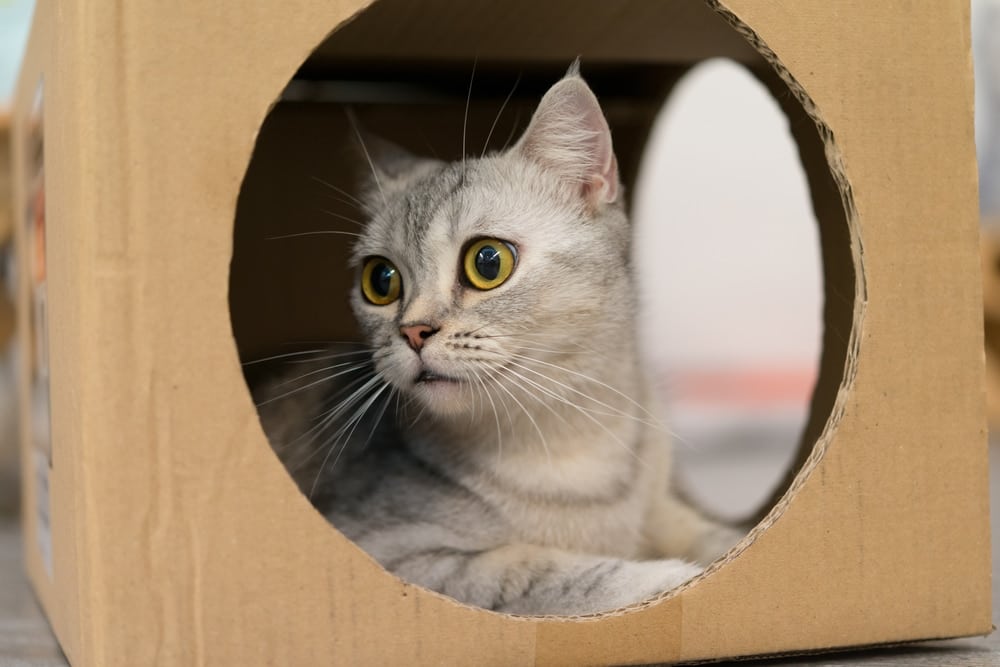Click to Skip Ahead
When it comes to cat compatibility, there are various factors at play, rather than just their gender. How well and whether two cats will get along, will mainly depend on the cat’s personality, early socialization, previous experiences with other cats, neutered status, age, process of introduction, and other factors.
Whether you’re thinking of bringing home a new cat to introduce to your existing cat or wondering if you should adopt two cats at the same time, we will share some of our best tips on getting your kitties acquainted.
 Is It Better to Have Two Cats of the Same Gender?
Is It Better to Have Two Cats of the Same Gender?
If you’re bringing home kittens from a different litter at the same time, there is no way of telling for sure whether they will get along, despite their genders. Gender may play a certain role in the success of their relationship, but it depends largely on the cat’s personality and early experiences, age, temperament, level of activity, and other factors.
Kittens are usually more adaptable to change than adult cats, and generally, it’s easier to get them introduced to another kitten or an adult cat. Whichever gender you decide to go for, it’s important that all cats are neutered and spayed, to prevent heat-related behavior, territorial disputes, urine spraying and marking, and unwanted pregnancies.
There are more important factors to take into consideration if you’re bringing home a new cat to introduce to an existing cat; for example, their age and each cat’s temperament.
Whichever gender cat you decide to go with, be aware that there will be an adjustment period. Below, we’ll share some tips on what you can do to make the adjustment period go smoother!
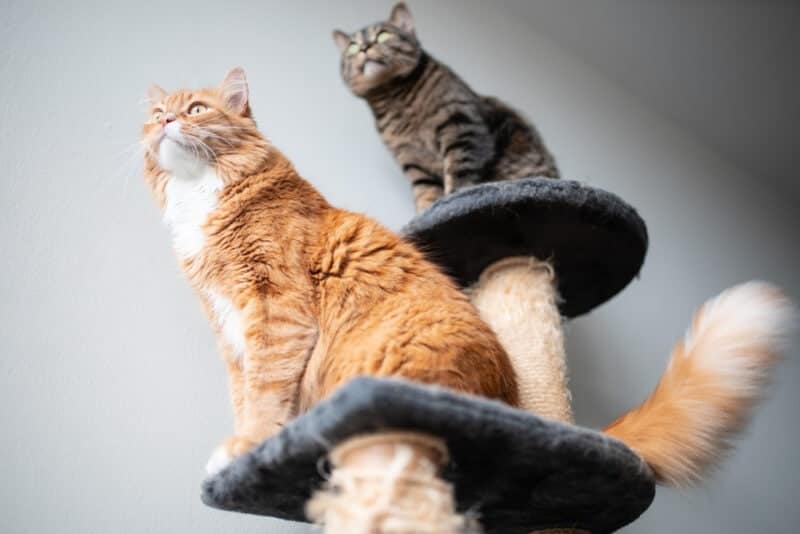
What Is the Best Age to Introduce a Second Cat?
The younger cats are when they are introduced to one another, the better. Cats that grow up together may form strong life-long bonds, although that is not always the case. A mature cat may not tolerate a young playful kitten, as well as a young adult, who may eventually play with them.
It’s still possible for an older cat to accept a new cat into the home, but it will require patience and a slow, careful introduction over a certain period of time. Ensure your senior cat still receives plenty of your attention and has a safe hiding spot where they can rest without being disturbed by a kitten. If you have an adult cat, it’s often better to bring a new kitten home rather than another adult cat. Just make sure to keep the kitten in a separate room and introduce them very carefully, over time!
Will My Cat Get Jealous if I Get Another Cat?
Jealousy is quite a complex emotion and cats are believed to be able to feel only six basic emotions. A lot of the time, the way our cats behave can be anthropomorphized and interpreted as jealousy, while in fact it may be due to territorial disputes, fearing or not accepting another cat. Cats are quite competitive when it comes to resources and it’s important they are all provided with their own basic resources they need, from bowls, toys, litter boxes, beds, scratch posts, and more. Otherwis,e they may exhibit undesirable behaviors, which may be seen as done in spite or out of jealousy, such as inappropriate toileting outside of the litter box.
It’s quite normal for a lot of cats to exhibit changes in their behavior and even routine when faced with a new cat in their home. This may be due to fear and uncertainty towards the newcomer, territorial dispute especially if one or both cats are not neutered or spayed, or if there is a lack of resources or space.
Swatting, hissing, growling, biting, unprovoked attacks, hiding, and even going outside of the litter box could all be little ways in which your cat is exhibiting signs of feeling threatened by the new cat.
If you think your cat is showing signs that can be interpreted as jealousy, it is super important to shower them with lots of love, attention, play, mental stimulation, and toys. Make sure your cats have separate bowls for food and water, toys, scratch posts, cat trees, and most importantly, their own litter boxes as well as an extra one, and don’t make them have to share things. Allow them plenty of time with a gradual introduction, which could take weeks, so they get more comfortable around each other.
Soon enough, your cat will begin to feel more secure and, hopefully, show fewer signs of uncertainty and more signs of confidence and acceptance of the other cat, and vice versa.
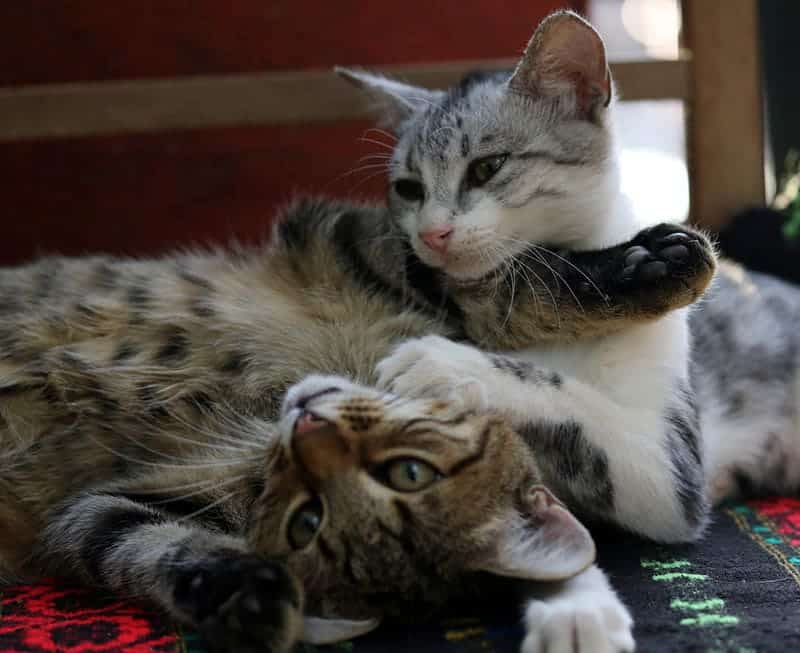
Are Cats Happier in Pairs?
Despite their reputation as aloof and solitary animals, cats are actually very social creatures. Bonded cats will often groom one another, play, and sleep curled up beside each other. Sometimes, solitary cats can suffer loneliness if they don’t have a feline companion, but that doesn’t mean that all cats will get along.
Even very social and easygoing cats may not get along with another cat in the same household, and getting a second cat is not always the solution for a seemingly lonely cat. Increasing physical exercise through playing as well as mental stimulation with an enriched environment are some of the ways to keep your cat fulfilled, while others will benefit from a feline companion.
Will My Older Cat Hurt a Kitten?
Despite many cats craving a social bond, some cats are extremely territorial. Your cat will almost certainly bristle at the presence of a new cat in their territory, especially if the introduction is not done appropriately and gradually. It’s not very common that an older cat will genuinely try and hurt a kitten, especially a younger one, but they may certainly play much rougher than the kitten can handle.
Kittens are not as strong or skilled at defending themselves as adult cats are, so be prepared to keep them in a separate room at first and start with scent exchange. In some cases, an older cat will not easily accept a new kitten, and may either hide and withdraw or if they feel threatened, they may even try to attack the kitten, either to protect their own resources, to defend their territory, or as a result of stress and uncertainty. Sometimes rough play may seem like a fight, but it can also certainly escalate into one.
If you introduce your kitten gradually and carefully, however, your adult cat should, hopefully, be able to accept them into the family.
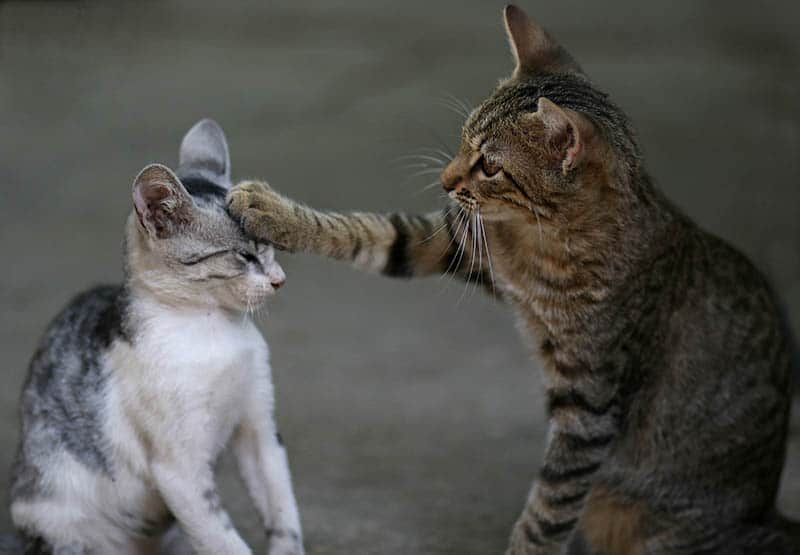
How Long Does It Take for New Cats to Get Used to Each Other?
All cats are different, and while it may take some cats a shorter amount of time and others longer, most cats can develop a friendship or at least tolerance over several weeks or even months.
While some cats will form bonds, others will merely learn to tolerate each other. This is normal, but if your cats continue to fight after months of living together with no improvement, even after intervention from a vet, it may be best to contact a behaviorist.
The 6 Tips for Introducing New Cats
1. Keep Them Separate
When you first bring your new cat home, keep them in a separate room with their own food and water bowls, litter tray, and bed. Do not let the cats mix or even see each other yet!
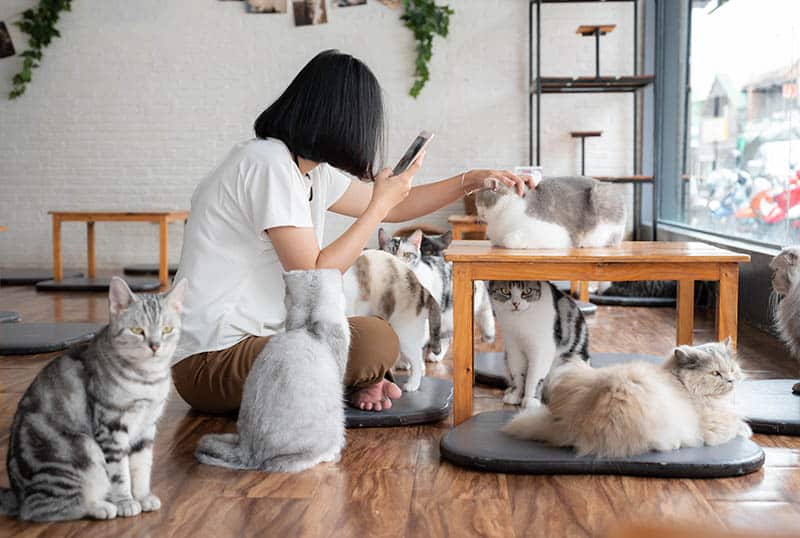
2. Use a Cat Pheromone Diffuser
Cat pheromone diffusers will help both of your cats to feel more relaxed and at ease. The diffuser mimics a feline’s facial pheromones, which have a pacifying effect on cats. Place one in your old cat’s favorite spot, and one in your new cat’s room.
3. Introduction Through Scent First
Before letting your cats catch sight of each other, take your new cat’s blanket and place it down close to your resident cat’s favorite place. If they react badly with a hiss, drag the blanket a little further or repeat the process again in a few days. Each day, gradually bring the blanket closer to your resident cat’s area and if they are calm and accepting of the new scent, reward them with treats and attention. By doing this, you’re encouraging your cat to associate the positive feelings when eating with the scent of your other cat.
Do the same thing with your new cat using a towel or blanket from your resident cat.
When both cats are eating happily and not reacting badly to each other’s scent, it’s time for a visual introduction!

4. Visual Introduction
Open the door to the room your new cat is in, but keep the two rooms separated with a baby gate or a screen. If you don’t have this, peg the door only slightly ajar so neither cat can fit through but can see each other.
5. Positive Association
Each day, place down treats for both cats at the same time on either side of the gate or door. The cats should begin to associate the positive feelings of being given treats with each other’s presence.
If the cats begin sniffing their noses or rubbing against the door, this is a good sign that they are on the right track!
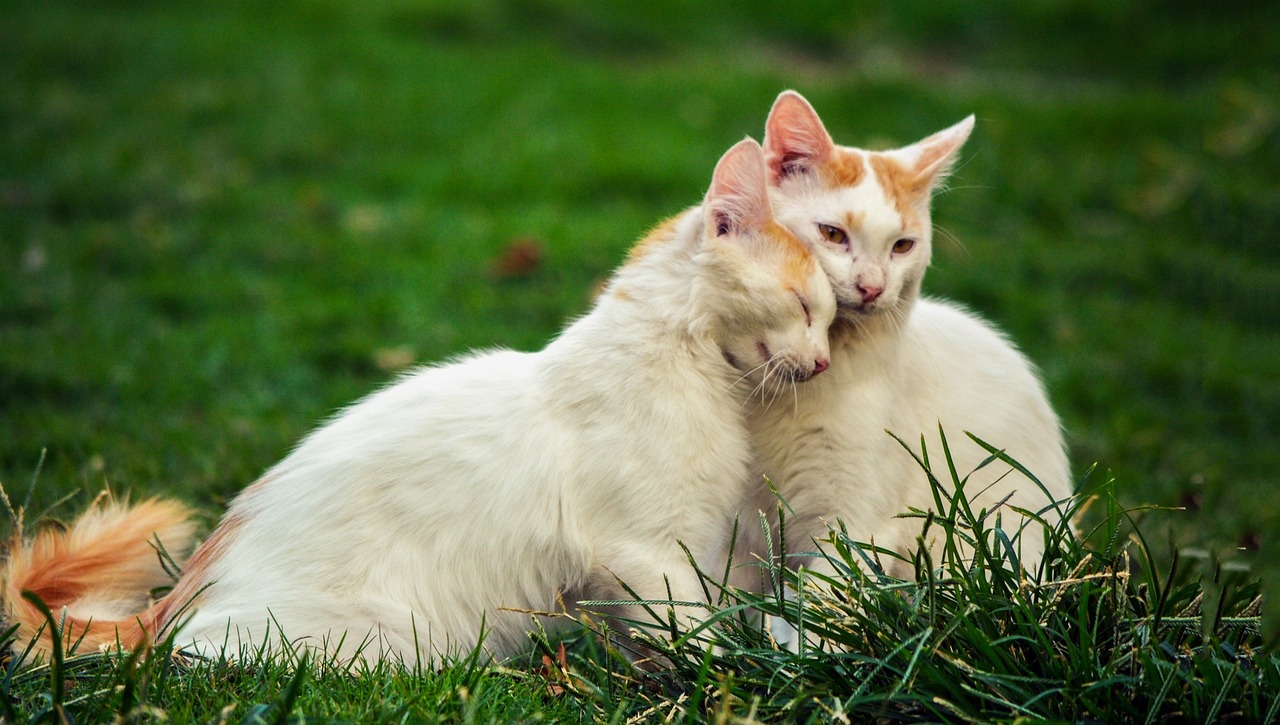
6. Open the Door
When the cats are showing positive signs of progress, open the door and let them explore. Do not attempt to push the cats into the same spot. Instead, let them do it in their own time. If the cats begin to hiss or fight, distract them with a toy, and try to feed them close by—in different bowls—as positive reinforcement when they are calm.
Some cats become best friends after just a few days, while it may take others many months. Above all, it’s important to remain calm and show patience.
If after your efforts your cats are fighting continuously, getting injured, beginning to have litter box issues, or one or both of them begins to hide or stops eating, it may be time to call your vet and ask for more advice.
If you need to speak with a vet but can't get to one, head over to PangoVet. It's an online service where you can talk to a vet online and get the advice you need for your pet — all at an affordable price!
Wrapping Up
Introducing your new cats to one another gradually and under the right conditions will have a bigger impact on how well they get along than simply the cats’ genders. It will greatly depend on the cat’s individual personality and temperament, their early socialization and previous experiences with other cats, as well as age and lifestyle.
Doubling the number of cats in your life will likely bring you double the amount of love, cuteness, and fun, too. We hope our tips help you to grow your pet family more smoothly!


 Is It Better to Have Two Cats of the Same Gender?
Is It Better to Have Two Cats of the Same Gender?

